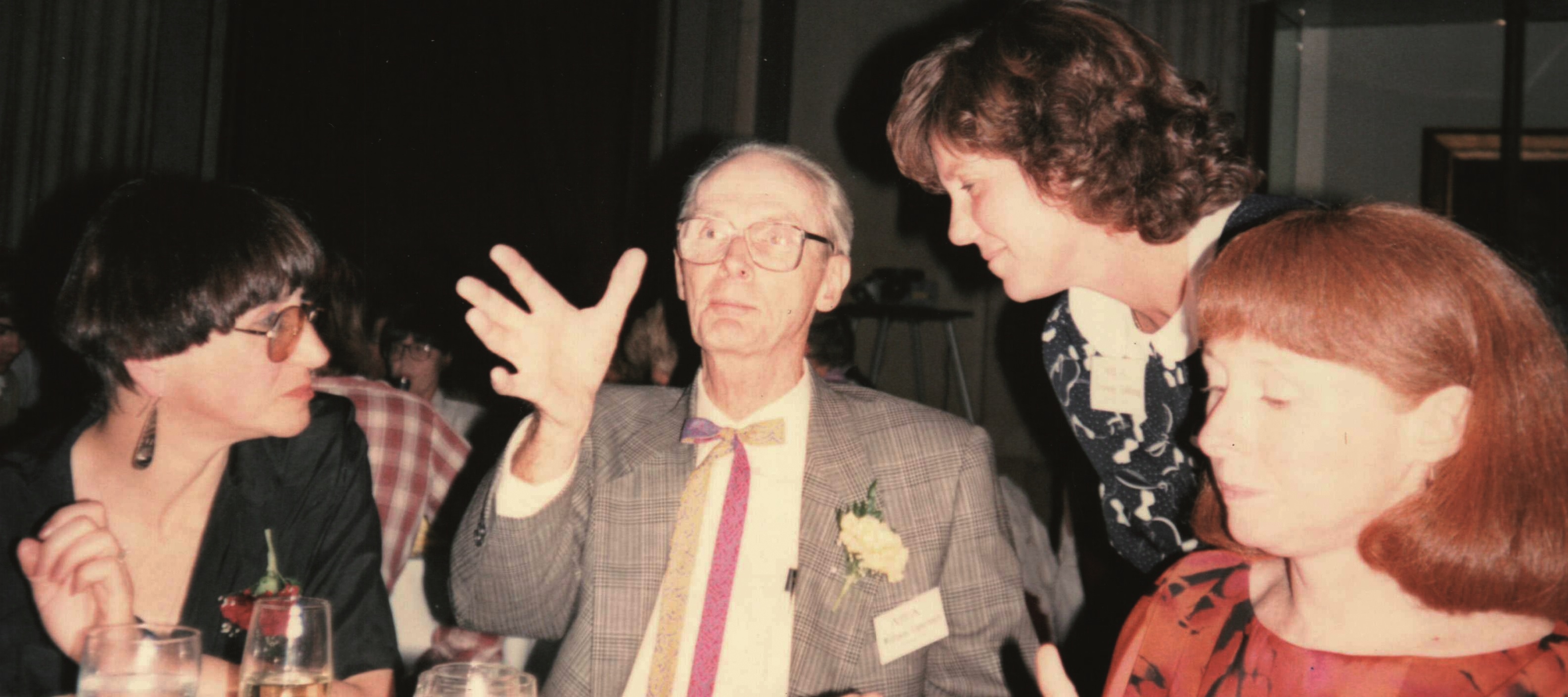- History Home
- People, Leadership & Service
- A Legacy of Excellence
- History & Impact
- Meetings Through the Years
- Resources
Obituary - William N. Lipscomb (1919 - 2011)Biography | Publications | Curriculum Vitae | Videos | Slides | Articles | Obituary
William N. Lipscomb, Jr. (1919 - 2011)
He was born on December 9, 1919 in Cleveland, OH. A year later, his music teacher mother and physician father moved the family to Lexington, KY where he spent the rest of his childhood. Over the next century he would become husband, father, clarinetist, scientist, prankster, teacher, mentor, detective, friend, Kentucky Colonel and Nobel Laureate, until pneumonia and complications from a fall would take his life on April 14th, 2011 at the age of 91. He is survived by his wife Jean, three children, three grandchildren and four great-children. How often do the accounts of today’s scientists begin with a toy chemistry set at the age of 12? Probably too often. But how many of those child chemists build a whole laboratory in their bedroom, ordering apparatus and chemicals from suppliers and drugstores and then go on to win the Nobel Prize? Bill Lipscomb made stink bombs and fireworks and even tried to “isolate a large amount of urea from the natural product”. By the time he graduated from high school, his home laboratory had grown so much that when he donated it to the school it more than doubled their equipment. He went to college at the Univ. of Kentucky on a music scholarship, but graduated with a degree in chemistry. He then hitchhiked to Los Angeles to attend graduate school at Caltech. He studied under Linus Pauling and earned his doctorate in Chemistry in 1946. He served four years in the US Office of Scientific Research and Development during WWII. The parts of his PhD dissertation describing that work are still classified and confidential. However, he has disclosed in an interview that some of that research involved analyzing smoke particles to “cloud up LA so that the Japanese could not find it to bomb it.” This research, he admits, is of little value now because “the smog is already there.” Upon completion of his PhD in 1946 he was offered an assistant professorship at the Univ. of Minnesota. He taught there for the next 13 years before moving to Harvard where he would become Professor of Chemistry from 1959-1971 and Abbott and James Lawrence Professor of Chemistry from 1971 until his retirement to Emeritus in 1990. During all this time, he continued the work on boron hydrides that he had started with Pauling at Caltech. (His musical education did not go to waste as he was a reputed classical clarinetist and performed in chamber music groups. He was the principal clarinetist with both the Pasadena Civic Orchestra and the Minneapolis Civic Orchestra.) He pioneered the use of x-ray crystallography to study the structures of boranes at low temperatures and finally determined the unusual way that boron formed chemical bonds. He was able to elucidate the chemistry and structure of boron compounds, predict how they would react chemically, and provide groundwork for the synthesis of more complex boron-containing compounds. This was not a trivial task due to the highly unstable and explosive tendency of boron preparations. Over the years his research interests evolved and his group solved the structures of many proteins. His structures of carboxypeptidase A and aspartate carbamoyltransferase were both the largest determined at the time. However, boron chemistry remained a passion for the rest of his career. Even when following other research pursuits, he would return to it “almost subconsciously within half a year. His dedication paid off and in 1976 he was awarded the Nobel Prize in Chemistry for his “studies on the structure of boranes illuminating problems of chemical bonding.” While reading about his life, the accounts of his research successes were impressive but pale in comparison to the personal accounts of his character. Affectionately called The Colonel due to his Kentucky roots (he would later be made an official member of the Honorable Order of Kentucky Colonels), he was truly an inspiration. Those who studied under him describe him as a great mentor and admired teacher. He was encouraging, imaginative, and always accessible. Two of his doctoral students, Roald Hoffmann and Thomas A. Steitz went on to win Nobel Prizes themselves. All who knew him never fail to mention his sense of humor. A practical joker and a wise guy in life, he also brought comedy into science. In Humor in Science, he collected quotes from his papers. In one paper he wrote, “We admittedly made this observation with the benefit of hindsight. This science is known as retrospectroscopy.” In another he included the footnote, “M. V. King and W. N. Lipscomb, to be unpublished.” My personal favorite in the list was the time he observed, “Xue and Lipscomb, personal communication... A communication with myself!” He often quoted Sherlock Holmes in his papers, using that detective as a model for his own investigations. He was also a regular participant in the Ig Nobel Prize Award ceremony sponsored by Annals of Improbable Research. The Ig Nobel Prize is awarded to scientists whose research achievements “first make people laugh, and then make them think.” His active participation in the Ig Nobels was not surprising as he was a man who made people both laugh and think at the same time.
ACA Philadelphia 1988 - Top: Bill Lipscomb explains crystallography to Ben Franklin. |


